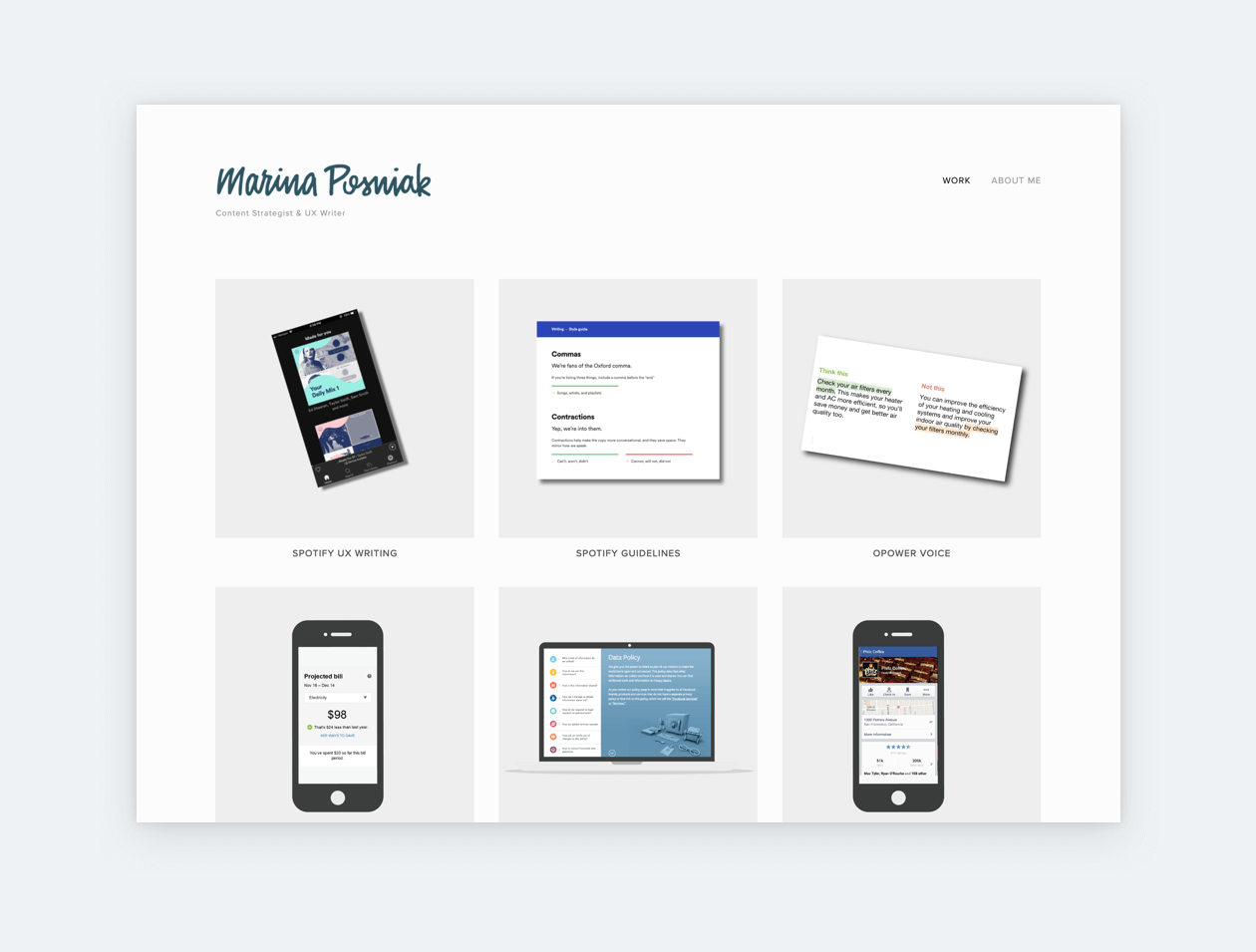Introduction
Useful and helpful products or services significantly impact users' lives. Designing quality products that meet users' needs and add value to their overall user experience is essential for modern businesses, particularly those focusing on maintaining a robust digital presence.
Along with the design decisions, a critical aspect of UX is how information is communicated to users. This is where UX writing comes into play. UX writing produces clear and understandable text that complements the design, such as a digital product.
The extent to which users can understand online information is, more often than not, directly related to their level of engagement. Good UX writing can ensure seamless interaction throughout the user experience, thus reducing frustration and roadblocks as users try to accomplish their goals.
In this article, we discuss the writing aspect of UX, highlighting how clear communication can improve user experiences. We also mention some fundamental principles and best practices of UX writing, which can lead to the design of better experiences.
Read along as we explore this exciting and sometimes challenging topic for designers.
Defining UX Writing
Do you encounter unclear calls to action or text on a website and wonder who wrote it? In most cases, UX writers are responsible for crafting the text accompanying a product or service.
What is UX writing?
User experience writing, or UX writing, is a process of writing text that helps users achieve their goals, particularly when interacting with a digital product or service. The text created by UX writers, often called microcopy, includes small snippets of helpful guidelines such as error messages, CTAs, etc.
Whether it is a mobile app or a website, the importance of UX writing in creating helpful user interfaces and, therefore, a better user experience cannot be overstated. Users who interact with a product, particularly in the digital environment, seek cues to help them achieve their goals. UX writing helps provide such cues by guiding users in the right direction.
With precise language, correct tone, and appropriate word choice, UX writers can ensure user experiences are enjoyable and fruitful. UX writing can help reduce interaction errors and ensure that users can navigate seamlessly, focusing on their goals.
UX writers play a critical role in the overall content strategy of any product or service. Some areas where UX writers can impact the user experience include specific button labels, clear error messages, improved onboarding instructions, and microcopy, such as hints and tidbits.
Google Pay’s improved error messaging is one example of good UX writing. Instead of an ambiguous message, such as “Transaction Failed”, Google Pay now provides users with better information, such as “Transaction failed due to insufficient funds”. This clear message reduces frustration and is also helpful to the users.
Integrating UX Writing into the Design Process
UX content writing is integral to a product or service's success in the digital world. From user research to the design and development of prototypes, the work of UX writers integrates into the design process. In the beginning, UX writing helps understand the audience better.
As the design process goes on, the work of UX writers helps draft clear and concise content for the target audience, adding value to their user experiences. Design teams can create cohesive, user-friendly experiences by giving due attention to UX writing.
Collaboration Between UX Writers and Designers
UX writers and designers collaborate to create a better overall user experience. This collaboration ensures that the visual design elements, interactive features of the product or service, and the text accompanying the design are all consistent, providing an intuitive experience.
UX Writing in the Wireframing and Prototyping Stages
The role of UX writing gets more pronounced after the initial user research is completed. When creating wireframes and prototypes, UX writers contribute to the design process by keeping the tone consistent brand identity and helpful, adding context to the design, and ensuring appropriate labels, error messages, and other microcopy elements.
Iterating UX Copy Based on User Feedback
User feedback is essential in improving the quality of UX writing and creating better content, leading to improved user engagement. Collecting user feedback through surveys, usability tests, and A/B tests can help make informed decisions about UX writing, thus meeting the target audience's needs.
The Difference Between UX Writing and Copywriting
UX content writing and traditional copywriting are often used interchangeably. However, there are several differences between how UX writers approach writing and copywriters' approaches. User experience writers write from the designers' perspective while focusing on the target audience's needs. On the other hand, copywriting has more of a marketing or informational style.
UX writers often collaborate with copywriters to ensure consistency and a familiar user experience.
Key Differences Between UX Writing and Traditional Copywriting
| Factor | UX Writing | Traditional Copywriting |
|---|---|---|
| Purpose | UX writers focus on the interactive elements in design, focusing on providing fruitful and satisfying experiences. | Traditional copywriting has a more marketing or sales-based approach, with the aim to educate the users or encourage them to make a purchase. |
| Primary focus and length | The primary focus of UX writing is on adding value to the design in a short, clear, and focused manner. | Copywriting is usually longer, involving the creation of headlines, user manuals, blog articles, and descriptions. |
| Style and tone | UX writers write in a user-centered tone with the aim of reducing ambiguity by using plain and simple language. | Traditional copywriting is less direct as compared to UX writing as the former describes things in detail and aims to attract the users. |
| User feedback | UX writers rely heavily on user feedback by performing user research and A/B tests to improve the content. | User feedback is taken into account for copywriting but the involvement of users is indirect and not as significant as compared to UX writing. |
Core Principles and Best Practices of Effective UX Writing
UX writing is critical in how users perceive information and interact with a design. Good UX writing can help create user-centered content, enrich the user experience, and allow businesses to project a consistent image with a strong brand identity.
What are some of the core principles of effective UX writing?
Some core principles of effective UX writing are as follows:
- Clarity and simplicity
- Encouraging user interaction
- Consistency across platforms and products
Some important principles and best practices of effective UX writing are discussed below.
Clarity and Simplicity
Clear and straightforward UX writing, along with the use of plain language, positively impacts the design of a product or service. Users who interact with a design, particularly in the digital space, want to accomplish their tasks quickly without any roadblocks or frustrations.
More words cause ambiguity, leading to frustration and a bad user experience. Therefore, clear and concise writing is always the best approach when it comes to UX writing for design elements such as button labels or error messages.
One of the most common examples of clear, short, and simple UX writing is the choice of the word “Reserve” used by Airbnb. When the users attempt to book a place, Airbnb does not use long phrases such as “Continue booking” or “Contact the owner.” Instead, a simple word, i.e., “Reserve,” instantly guides the users.
Writing for Action: Encouraging User Interaction
The primary goal of any user-centered design is to lead users to the right content and ensure their experience is satisfying. UX writing adds to this purpose by using simple yet strong verbs, engaging users in an interactive experience.
Effective calls to action (CTAs) are essential to any digital design, and UX writers can add significant value. Action-oriented writing with strong CTAs allows users to make the right choices and helps maintain a consistent brand voice.
For example, Amazon’s Buy Now button has a vital action element. It also removes additional steps, encouraging users to finish their purchase quickly.
Consistency Across Platforms and Products
Like any other aspect of UX design, consistency in writing is essential for the success of a product or service. When users interact with a design from different devices and using various platforms, providing a consistent and seamless experience is essential. UX writers should carefully decide words, terms, CTAs, and error messages so users understand.
Creating and maintaining a consistent image is essential for any brand. Whether it is a mobile app or a website, a consistent brand voice can always help project a strong brand image.

The Importance of Consistency in UX Writing (Image Source)
Building a Career in UX Writing
UX writing is a skill that is becoming increasingly popular. Design teams and leading organizations are always looking for skilled individuals with good design and writing skills to add value to their products and services.
If you’re an aspiring UX writer aiming to join a well-established team in a leading UX design studio, there are several things you can do to make yourself more marketable. Some critical skills and resources are discussed below.
Essential Skills for Aspiring UX Writers
UX writers require a unique set of skills to provide users with the correct information in the proper manner at the right time.
What are some essential skills for aspiring UX writers?
Some essential skills for aspiring UX writers are as follows.
- Understanding of UX Principles
- Empathy
- Research Skills
- Clear and Concise Communication Skills
- User-Centered Thinking
Some critical skills essential for aspiring UX writers are as follows.
- Understanding of UX Principles: UX writers need a strong foundation of UX principles, such as simplicity, consistency, and visual hierarchy. This will enable them to work well with designers and create effective written content.
- Empathy: UX writers, like designers, need to be empathetic toward users so they can understand their pain points and develop practical solutions.
- Research Skills: UX writers need sound research skills. They must gather user feedback, understand the problems, and critically analyze the results.
- Clear and Concise Communication Skills: Good communication skills, mainly when using plain language, conciseness, and clarity, are critical for aspiring UX writers.
- User-Centered Thinking: UX writers should always take a user-centered approach to their tasks. This is important because the ultimate goal of UX writing is to provide a better user experience and meet the target audience's needs.
Educational Resources and Training for UX Writers
UX writing is constantly evolving, particularly with the introduction of generative AI. Designers must be aware of this changing technological landscape so they can incorporate it into their work and produce effective written content.
Some essential resources for UX writers are as follows.
- Courses: Introduction to UX Writing on Udemy and UX Writing Fundamentals by UX Content Collective are two exciting and helpful courses to start.
- Books: Microcopy: The Complete Guide by Kinneret Yifrah and Strategic Writing for UX by Torrey Podmajersky are two good books to check out for aspiring UX writers.
- Online Platforms: UX Design Institute and UX-related publications on Medium, such as UX Collective, can help stay updated with critical concepts and advancements in UX writing.
Building a Strong UX Writing Portfolio
UX writers should also focus on creating a solid presence in the form of a portfolio. A good portfolio highlights your critical skills and experiences and allows you to get more projects to enrich your portfolio further. Looking at some examples of UX writing portfolios can inspire and help you design one for yourself.

UX Writing Portfolio Example (Image Source)
When working on your portfolio, the following tips can come in handy.
- Include specific information about case studies and projects you’ve previously worked on so the viewers can understand the quality and impact of your work.
- Design it clean, attractive, and aesthetically pleasing to showcase your UX design skills and writing expertise.
- Include metrics to showcase your impact and ask your connections for testimonials that can speak about the quality of your work.
Conclusion
User experience (UX) writing is gaining popularity in the digital environment. With their expertise and work, UX writers contribute to the design of effective user experiences and help maintain a consistent brand identity.
Users can experience several pain points with a product or service. The ultimate goal of a good design is to reduce these pain points and provide a practical, helpful, and satisfying user experience. Clear and concise writing, using plain language and an action-oriented approach, can make the interactions between users and designs fulfilling.
In the above article, we discussed the fundamental principles of UX writing and some guidelines that aspiring designers and writers can follow to become better UX writers.
Dec 2, 2024
